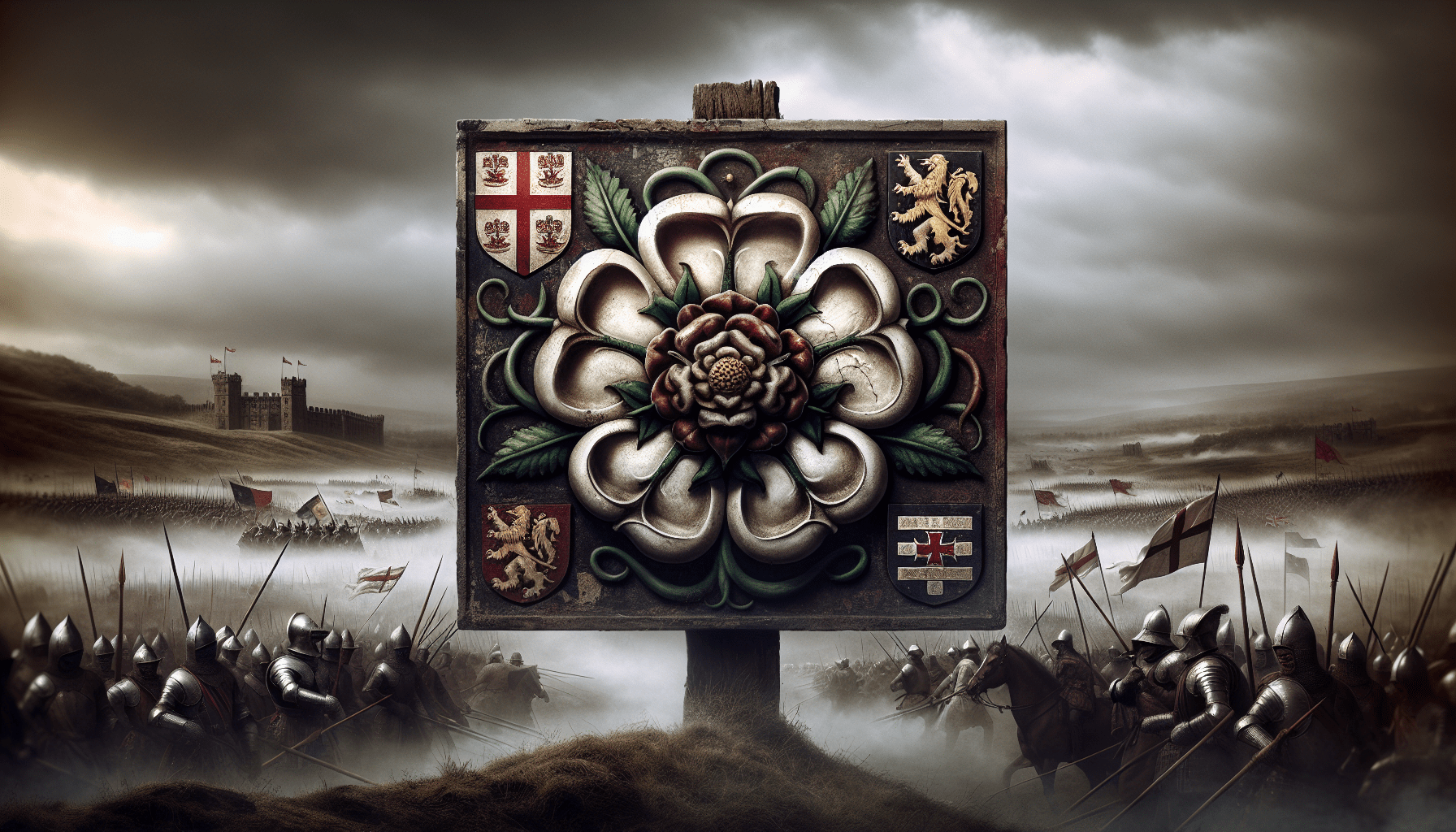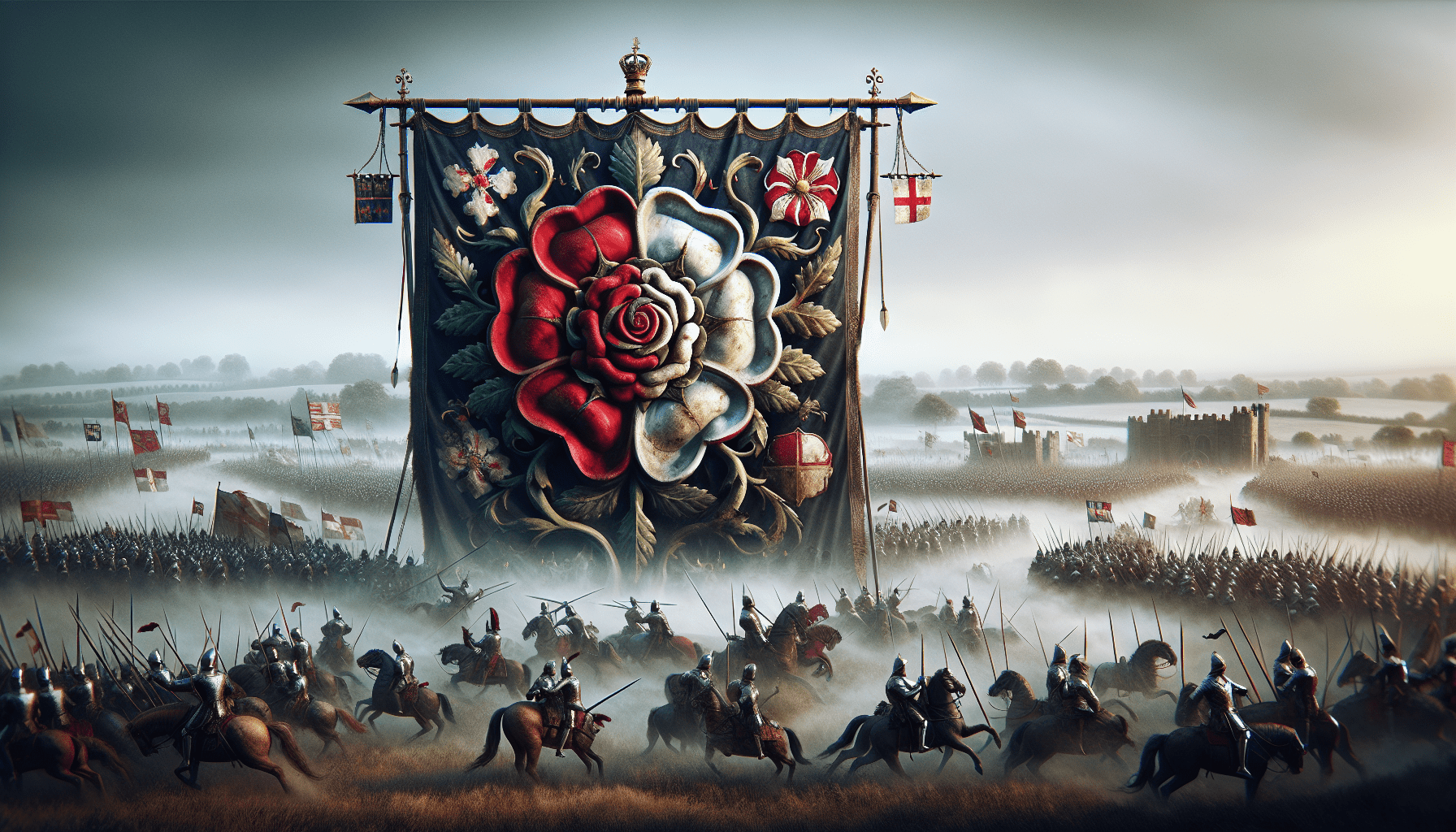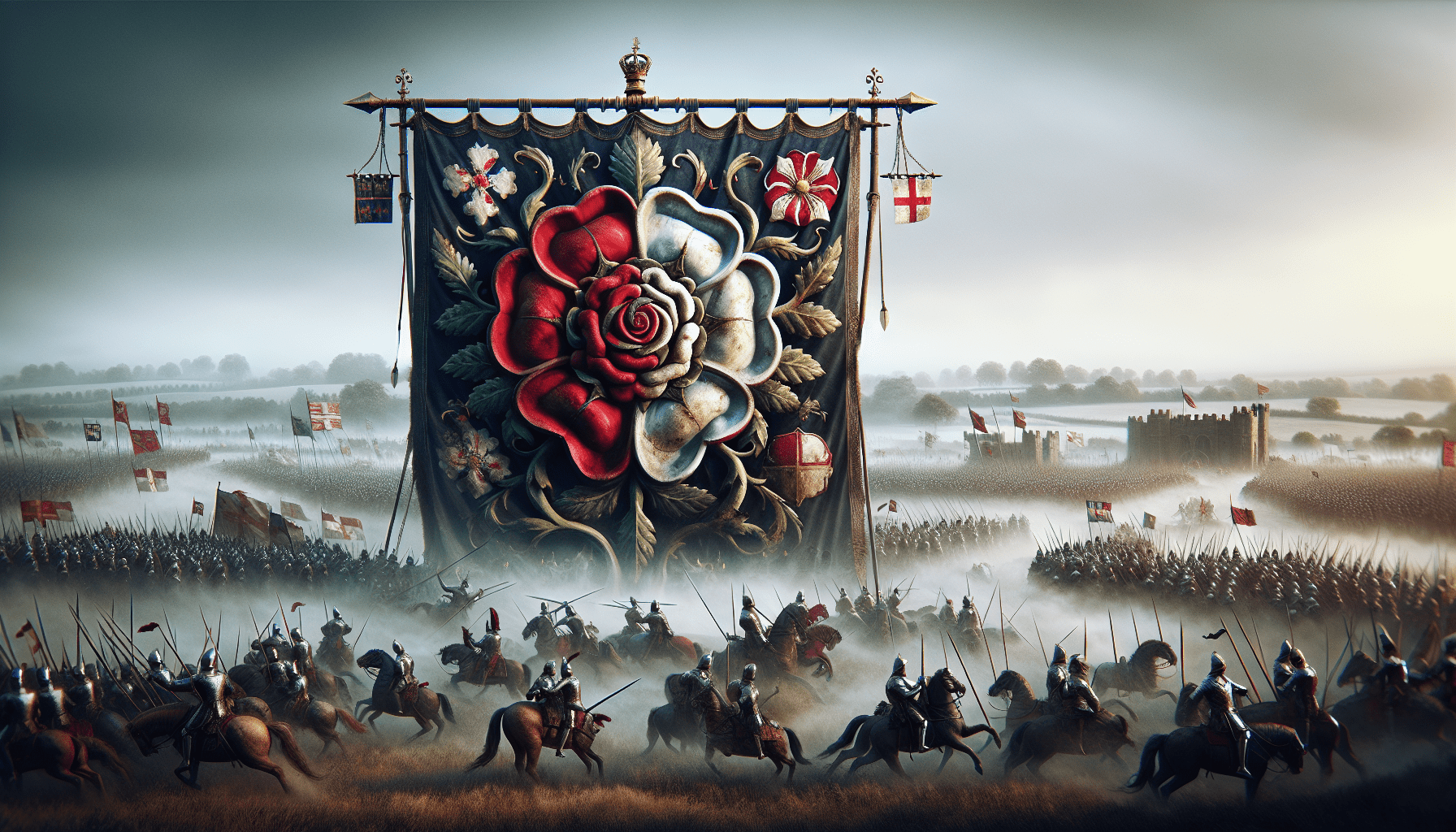The Battle of Bosworth, occurring on August 22, 1485, represented the final significant confrontation of the Wars of the Roses, an extensive civil conflict between the noble houses of Lancaster and York. This battle culminated in the victory of Henry Tudor, the Earl of Richmond, who led the Lancastrian forces alongside disaffected Yorkists. His triumph not only marked his ascendance as the first monarch of the Tudor dynasty but also signified the demise of King Richard III, the last English monarch to perish in battle. The implications of this confrontation extended beyond the battlefield, as it effectively ended the Plantagenet dynasty and transformed the future of English governance.
The unfolding military engagement at Bosworth Field showcased a striking disparity between the two armies, with Richard III commanding approximately 10,000 troops, while Henry Tudor’s forces numbered around 5,000. Initial advantages laid with the Yorkists; however, the intervention of Lord Stanley changed the course of the battle dramatically. Tudor’s strategic maneuvers during critical moments of the conflict, coupled with the ultimate fatality of Richard III, precipitated a rout of Yorkist forces, securing Tudor’s position and leading to his coronation as King Henry VII. This monumental event in English history reshaped the political landscape and set the stage for future dynastic unions, notably through Henry’s marriage to Elizabeth of York.
The Wars of the Roses: An Academic Overview

Background of the Wars of the Roses
Origins and Historical Context
The Wars of the Roses, a protracted civil conflict that spanned from 1455 to 1487, emerged from the tumultuous political landscape of 15th-century England. The origins of this dynastic struggle can be traced to the weakening of the Plantagenet dynasty and the consequential power vacuum created by internecine rivalries. The conflict primarily pitted two factions against each other: the House of York, descended from Edward III’s second son, and the House of Lancaster, descended from his third son. The contest was ignited by questions of legitimacy, the rightful heirs to the throne, and the growing disenchantment among the nobility regarding the perceived incompetence of monarchs.
Key Players: Houses of Lancaster and York
The two principal houses—Lancaster and York—represented contrasting claims to the English throne, with prominent figures emerging at the forefront. Henry VI of the House of Lancaster, characterized by bouts of mental instability, struggled to manage the factions vying for influence in his court. Conversely, the Yorkists, led initially by Richard, Duke of York, favored a more aggressive expansion of their political power and sought to dethrone Henry VI. The conflict saw notable figures like Edward IV, Richard III, and Margaret of Anjou, amongst many others, maneuvering for control, and these dynastic rivalries significantly shaped the political discourse of the era.
Significance of the Conflict in English History
The significance of the Wars of the Roses cannot be overstated; they represented not merely a struggle for power but also a profound transformation in the English monarchy and governance. The conflict culminated in the establishment of the Tudor dynasty after the Battle of Bosworth—a pivotal event that symbolized the end of medieval England and the transition towards a more centralized and modern monarchy. The social and political ramifications of the wars altered the fabric of English society, leaving an indelible mark on the nation’s historical narrative.
The Battle of Bosworth: An Overview
Date and Location of the Battle
The Battle of Bosworth Field was fought on August 22, 1485, in Leicestershire, England. This confrontation represented the culmination of the Wars of the Roses, marking a decisive moment in the ongoing power struggle between the Lancastrians and Yorkists. The battlefield’s geographical features would play a crucial role in the unfolding of the events.
Strategies Employed by Both Factions
The strategies employed by the Lancastrian and Yorkist forces highlighted their differing military philosophies. Henry Tudor, the leader of the Lancastrians, recognized the importance of securing allegiances and aimed to unify disaffected Yorkists to bolster his ranks. The Yorkists, under King Richard III, relied on their numerical superiority and seasoned military commanders. Both sides sought to manipulate terrain and leverage their respective strengths in order to secure victory on this fateful day.
Assessment of the Battlefield Terrain
Set against the backdrop of Ambion Hill, the battlefield presented varied topographical features that would influence the combatants’ tactics. The hill’s elevation provided a strategic advantage for Richard III’s forces, allowing them to dominate the surrounding landscape. However, the Lancastrians, with their diverse army composition, aimed to exploit any weaknesses in their adversaries’ defenses as the fight unfolded.
The Lancastrian Forces
Leadership of Henry Tudor
Henry Tudor, later known as King Henry VII, emerged as a prominent leader as he aimed to reclaim the throne for the Lancastrians. His background as a relatively unknown exile in France infused his campaign with an aura of tenacity and resilience. Despite lacking prior battlefield experience, Tudor’s ability to assemble a coalition of like-minded nobles and soldiers proved crucial for his cause.
Composition of the Lancastrian Army
The Lancastrian army, estimated at around 5,000 strong, comprised poorly equipped footmen, heavily armed knights, and a contingent of French mercenaries. This diverse composition reflected a blend of social classes, as the army consisted of commoners fighting alongside the noble class. Such diversity both underscored the desperation of their cause and heightened their collective resolve.
Challenges and Strengths of the Lancastrians
The Lancastrians faced several challenges, including being outnumbered and the question of their leadership’s military efficacy. However, their strengths lay in unified aspirations and a compelling vision of future governance. The promise of restoring stability and order to a fractured nation galvanized the soldiers, creating a potent motivational force in the face of adversity.
The Yorkist Forces
Leadership of King Richard III
Richard III, the last King of the House of York, was a formidable military leader, steeped in the dynamics of war from his earlier experiences in the Wars of the Roses. His military acumen and aggressive strategies earned him a reputation as a skilled commander. However, his tyrannical reputation and his controversial rise to power brought about significant animosity among the nobility, complicating his command at Bosworth.
Strength and Size of Yorkist Army
The Yorkists fielded an army estimated at approximately 10,000 strong, giving them a clear numerical advantage over the Lancastrians. The composition of their forces largely included seasoned soldiers, well-armed knights and men-at-arms, which allowed them a degree of cohesion and combat effectiveness significantly greater than their Lancastrian counterparts.
Tactics and Advantages Held by the Yorkists
Richard III’s tactical advantage stemmed from both his experienced troops and his strategic placement on the battlefield. Primarily relying on strong cavalry units and the cohesive organization of his forces, Richard aimed to exploit the disarray of his opponents, anticipating that their lack of military experience would become evident under pressure.

Key Figures in the Battle
Henry Tudor: Rise to Prominence
Henry Tudor’s rise to prominence as the leader of the Lancastrians was neither straightforward nor assured. Following years in exile and relative obscurity, he transformed rapidly into a symbol of Lancastrian resilience, successfully rallying supporters and presenting himself as the legitimate heir to a deposed line of kings. This ascendancy would culminate in his pivotal role at the Battle of Bosworth.
Richard III: The Last Plantagenet King
Richard III’s reign was fraught with political peril, characterized by his controversial usurpation of the throne from his nephews. As the last monarch of the Plantagenet dynasty, his leadership in battle was a reflection of both his military skill and the political ramifications of defiance against the established order. His determination to maintain power amidst growing dissent ultimately set the stage for his tragic downfall.
Lord Stanley: The Wild Card in Battle
Lord Stanley, a key figure in the battle, played a dual role as both a member of the Yorkist faction and a covert ally of Henry Tudor. His strategic indecisiveness ultimately positioned him as a significant wild card amidst the turmoil. His interventions, informed by political maneuvering rather than simple allegiance, became decisive moments in the battle’s outcome.
The Course of the Battle
Initial Engagements and Strategies
The battle commenced with fierce fighting as both armies clashed on the field, with the Yorkists seemingly taking the upper hand early on. Richard III’s forces, buoyed by their numerical superiority and tactical formation, first pressed their advantage against the Lancastrians. Despite being outnumbered, Tudor’s forces sought to maintain order amidst the chaos, anticipating the need for reinforcement to turn the tide.
Turning Points in the Battle
A significant turning point arose when Lord Stanley’s forces, previously neutral, were finally galvanized into action. This unexpected maneuver took Richard III by surprise, as it disrupted the Yorkist formation and effectively caught them unprepared for the threat posed by a sudden infusion of Lancastrian reinforcements. The ensuing confusion among the Yorkist ranks became a pivotal moment in the battle.
The Role of Lord Stanley’s Forces
Lord Stanley’s forces played a critical role during the latter stages of the conflict. Their sudden and decisive engagement not only reinforced Henry Tudor but also sowed chaos within Richard III’s well-established lines. The shifting momentum from Stanley’s intervention led to a rapid culmination of events that would redefine the conflict at Bosworth.

The Death of Richard III
Circumstances Surrounding His Death
The demise of Richard III during the battle was marked by a dramatic turn of events, resulting from the chaotic fray as he attempted to rally his troops amid mounting disarray. His fierce determination to not retreat became his downfall, as he found himself increasingly isolated from his forces. The moment he fell in battle became a poignant symbol of the collapse of the Yorkist cause.
Impact of His Demise on the Yorkist Forces
The news of Richard III’s death resonated swiftly throughout the battlefield, causing panic among the Yorkist ranks and leading to a rout of their forces. His fall represented not just the loss of a monarch, but also the collapse of an entire dynastic claim to the throne. The psychological shock reverberated throughout the confederation of Yorkist soldiers, leading many to abandon the fight.
Historical Significance of Richard III’s End
Richard III’s end at Bosworth Field marked the official conclusion of the Plantagenet dynasty and the ushering in of a new political order under the Tudors. His death was emblematic of a broader shift—reflecting the inextricable link between personal fate and larger historical narratives. It thus reverberated through English history, symbolizing the fragility of power and the relentless flow of political tides.
Aftermath of the Battle
Casualties and Losses on Both Sides
The aftermath of the battle left considerable casualties on both sides, with the Yorkists enduring a more significant proportion of losses. While the Lancastrian forces regrouped and celebrated their hard-fought victory, the Yorkists suffered a catastrophic collapse in morale and personnel, further solidifying the transition of power and modifying the landscape of English nobility.
Establishment of the Tudor Dynasty
With the defeat of Richard III, Henry Tudor ascended the English throne as King Henry VII, marking the establishment of the Tudor dynasty. His marriage to Elizabeth of York symbolically united the warring factions, thereby attempting to heal the rifts caused by the prolonged civil conflict. This solidarity laid the groundwork for the relative stability and strength of Tudor rule in subsequent years.
Implications for the Future of England
The implications of the Battle of Bosworth transcended the immediate outcomes of military victory or loss. The transition from the Plantagenets to the Tudors signified a permanent alteration in the tenor of English politics, fostering a climate that emphasized the centralization of royal power, political diplomacy, and foundational changes in governance which would resonate through subsequent centuries.
Historical Legacy of the Battle
How Bosworth Changed the Course of English Monarchy
The Battle of Bosworth marked a seismic shift in the course of English monarchy, functioning as the definitive end to a divisive civil strife. It reinstated the idea that kingship could be reclaimed through military might and coalition-building, thus altering perceptions of legitimacy and succession. The Tudor dynasty that followed operated under this acknowledgment, reshaping the monarchy’s role in governance.
Cultural Representations of the Battle
The Battle of Bosworth has since been immortalized in various cultural representations, from historical texts to modern literature and cinema. Its iconic status as a defining moment within the Wars of the Roses invariably inspires narratives exploring themes of ambition, royalty, and human frailty. This enduring interest reflects society’s complex relationship with power, betrayal, and redemption.
Continued Fascination with Lancastrians versus Yorkists
The rivalry between the Lancastrians and Yorkists has continued to captivate historians, writers, and the general public alike. The dramatic narratives of ambition, conflict, and familial strife have evolved into archetypal stories within English folklore. This ongoing fascination speaks to broader human experiences of division and reconciliation that persist through time.
Conclusion
Recap of the Significance of the Battle of Bosworth
In summation, the Battle of Bosworth represents a crucial turning point in English history, embodying the culmination of the Wars of the Roses and the transition from the Plantagenet to Tudor dynasties. The battle’s outcome initiated significant changes in governance and the royal influence in England, establishing new political legitimacy.
Reflection on the Lasting Impact of the Wars of the Roses
The lasting impact of the Wars of the Roses resonated throughout subsequent centuries, shaping both political ideology and the cultural landscape of England. The narratives of power struggles and dynastic battles continue to serve as cautionary tales within the broader discourse of history.
Final Thoughts on the Lancastrian and Yorkist Rivalry
Ultimately, the rivalry between the Lancastrians and the Yorkists remains a poignant reflection of humanity’s perpetual struggle for power and legitimacy. The story of their conflict underscores the complexity of history, inviting continuous inquiry and reflection on themes of ambition, identity, and the very nature of kingship within the tapestry of English heritage.
